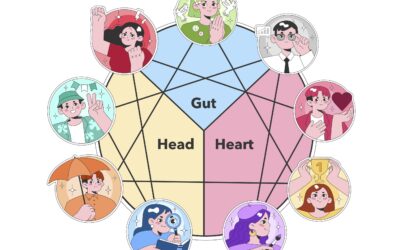–by Betty E. Landis
Be still and know that I AM God! (Psalms 46:10)
Weekly worship at the Lutheran congregation of my childhood led me to expect thundering organ music, resonant brass instruments and hearty, strong singing of hymns like the Doxology and “A Mighty Fortress is Our God,” as sure-fire ways to know God was “in the house.”
Later, as an adult, I learned that the reformer Martin Luther used Psalm 46 as a lyrical basis for the closest thing my Lutheran tradition has to a patronal or alma mater song. And that same Psalm 46 includes a contradictory, yet oft-ignored worship instruction: Be still. Not simply a directive, these words function as a promise: In stillness, too, we may know God.
These days Psalm 46:10 can be a simple way to experience contemplative prayer, an ancient form of prayer that is making a comeback in faith communities. When we consider the numerous “secular” meditation and mindfulness groups that have sprung up in recent years, the practice of contemplative prayer may be a simple way to bond with neighbors who may not be connected to a faith community but, like us, hunger for authenticity and human connectivity.
It’s badly needed. Our society struggles against making idols of anxiety, competition and comparisons.
According to researcher Dr. Fred Luskin, director of the Stanford University Forgiveness Projects, a human has about 60,000 thoughts daily, 90 percent of which are repetitive. For many people, most of these repetitive thoughts are negative. Prayer is one of the many practices Luskin has studied that people use successfully to bring about positive change.
Transcending together
Contemplative prayer comes in all sorts of postures, programs and procedures, but the type to which I return time and again I first encountered years ago. At that time, a mentor in Indianapolis invited me to tag along with her at a worship workshop sponsored by GIA Publications. I’ll never forget how the workshop leaders arranged the chairs in a circular formation; made space available for kneeling, sitting or reclining; dimmed the lights; scattered beautiful icons and fabrics throughout the worship space; and gave each participant a candle. They demonstrated worship developed by an ecumenical Christian monastic community in Taizé, France.
While I was familiar with some Taizé songs from the With One Voice hymnal, I had not heard them sung in a chanting style. While I had lit a candle on Christmas Eve, I had never quietly placed my candle together with those of others in a container of sand, reflecting the power of our combined lights, our combined prayers.
The chanting seemed to go on forever. Yet above our repetitive chants floated the transcendent voices and the reed and stringed instruments of the workshop musicians. Sometimes there also were long silences—the kind that make you squirm until you finally give up and listen to your own breathing. Thanks to the leaders’ spoken instructions, as well as the explanations in the worship bulletin, I kept learning throughout this new worship experience. I learned how easily my mind could wander, yet how the chant’s lingering words gave me permission to release my thoughts. I learned how easily I could fidget or become distracted, yet how brief Bible passages, proclaimed in multiple languages, helped me to re-center in the now. I learned to focus on the large icons and cross bathed in candlelight. I learned there is nothing like being in a large group of silent, praying people.
The Rev. Betty E. Landis has served as an ELCA pastor in the Metropolitan Chicago and Allegheny synods.
This article is excerpted from the July/August 2018 issue of Gather magazine. To read the full story or more like it, subscribe to Gather.
More like this
A priceless gift
In 1993, my husband and I moved from Southern California where I’d grown up to Berkeley, where I would begin graduate school. I was excited to be on this new adventure with the man who had been my high school sweetheart. We were off on our own, and anything was...
In the image of God
If you were to attend Sunday service at Holly Grove Lutheran Church in Lexington, North Carolina, you might notice that Pastor Anna E. Carter rarely leads worship alone. As she sets the table, serves communion, and processes down the aisle, there is a little boy at...
Faith in economics
What is the rule of your household? How do you manage your home? How do you make sure that everyone gets what they need and sometimes what they want? Who feeds the dog or cleans up after the cat? Who does the grocery shopping, and who pays for the groceries? How are...






It is nice to see meditation returned to the religious roots from which it sprang.Nowadays meditation has been uprooted from its religious, Eastern roots and Western roots too, and is promoted for entirely secular benefits: lowering the blood pressure,for example. It’s dressed up with the word “spiritual,” but that’s always vague. It is meant to be part of a religious tradition. I wish more silence were incorporated in the church offerings other than those on Sunday.
“Be still and know that I am God” is one of my favorite verses. It says so many things in our crazy, very busy world. In a way I miss the prayer vigils we used to have while I was growing up. As I reflect back,I don’t think I appreciated them when I was young. Now in my senior years and in our current world I long for that peaceful time.
I have always loved quiet, contemplative prayer. In my church, there are many congregants and there is always noise, joyful noise, but it would be nice to have silence sometimes.